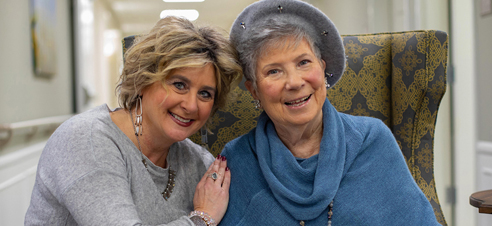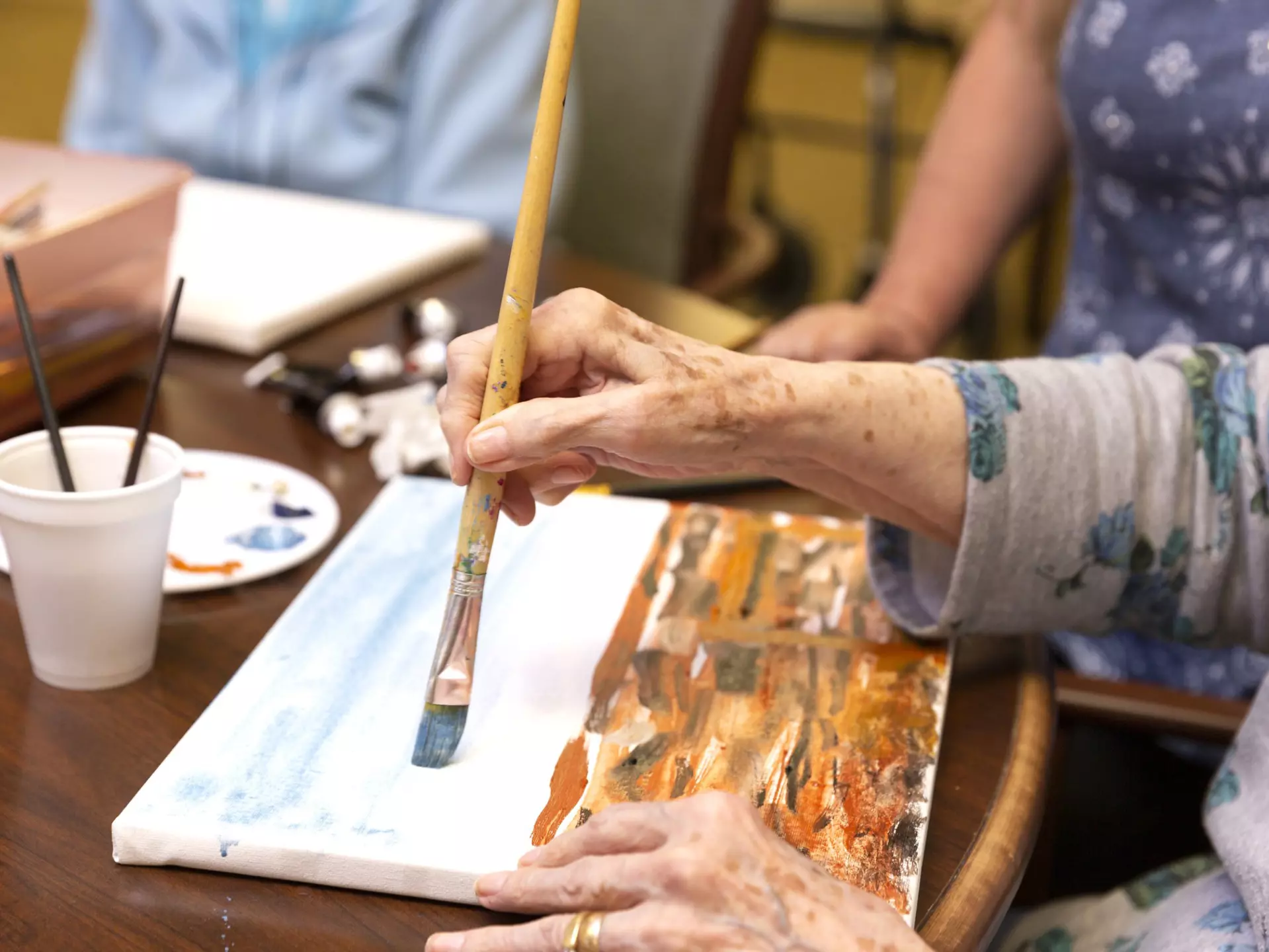Painting is a classic hobby that can be picked up at any age. But did you know it may also offer many wellness benefits for you or someone you love? What’s more, you don’t need to be a seasoned artist to enjoy all the perks that painting has to offer. If you’re unsure how to get started, we’re here to help guide you.
In this blog, we’ll explore painting for seniors and share some practical ideas to help you get started. Whether you’re looking for a new hobby or a meaningful way to connect with someone you love, we have some tips you won’t want to miss!
Why Painting Is Great for Older Adults
While the perks of painting can be enjoyed by people of all ages, many are particularly meaningful for older adults. Here are some key benefits of painting for seniors:
- Lifts Mood: Creating a piece of art may help you or someone you love feel their best. Numerous studies show that engaging in creative pursuits, like painting, can promote the release of serotonin, the hormone that helps us feel happy.
- Promotes Mental Health: Painting is widely used in art therapy, which has been shown to promote relaxation and reduce feelings of stress and anxiety.
- Supports Fine Motor Skills: Painting typically involves plenty of hand-eye coordination, which may help boost fine motor skills. These skills can be particularly useful for carrying out activities of daily living (ADLs), like buttoning a shirt or managing other fasteners like zippers.
- Encourages Self-Expression: Advanced-stage dementia or other health conditions may make verbal communication difficult for some individuals. However, painting can offer a meaningful way to express thoughts and feelings.
- Creates Social Opportunities: As we age, maintaining social connections becomes especially important. Painting is often enjoyed in group settings, like sessions with friends or community art classes, which can offer plenty of chances to meet new people and form connections.
- Improves Cognitive Skills: Painting engages many areas of the brain, making it a gentle and calming way for older adults to stimulate their minds. These cognitive benefits can be especially helpful for those with memory conditions like dementia or Alzheimer’s.
Types of Painting That Work Best for Seniors
In addition to being an enjoyable pursuit, painting for seniors offers many wonderful benefits that can significantly improve your or your loved one’s quality of life. That said, some types of painting might be better suited for older adults than others. Here are some types of painting for seniors you may want to try with a friend or loved one:
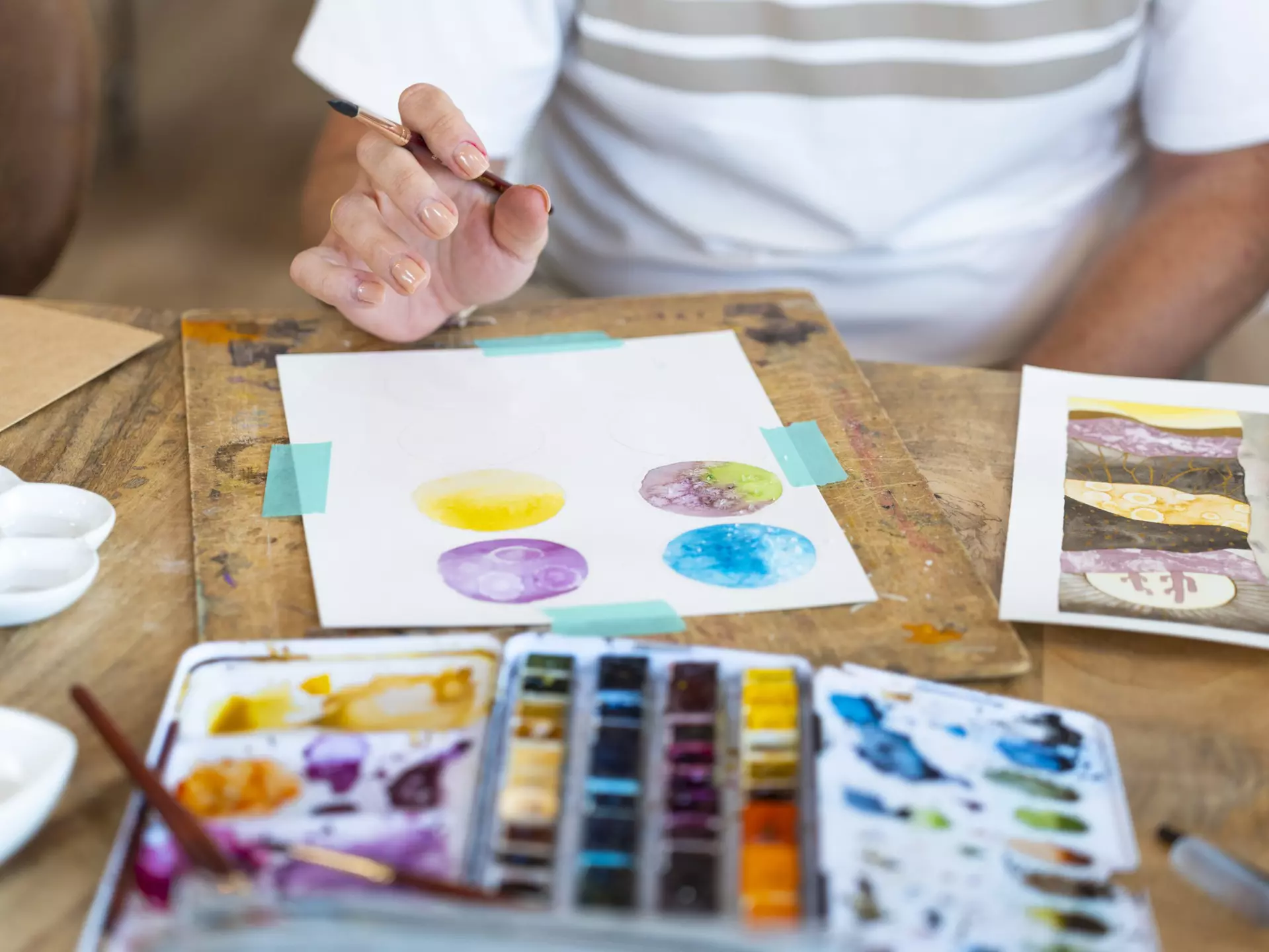
Watercolor Painting
Watercolor painting involves using paint that’s been mixed with water. Typically, the more water you add, the lighter the colors become. To get started, you’ll need some watercolor paints, a few soft brushes in different sizes, a cup of water to clean your brush, special watercolor paper, and something on which to mix your paints, like a plastic lid.
The beauty of watercolor painting is that you don’t have to worry about creating a perfect picture. Instead, you can simply enjoy watching the paint flow on the paper, creating a gentle wash of color. Alternatively, you can let one layer dry before adding another to create an illusion of depth. Plus, watercolor is usually less of a hassle to clean. That being said, it can be challenging to control the movement of the paint. Also, watercolor paintings usually require some time to dry.
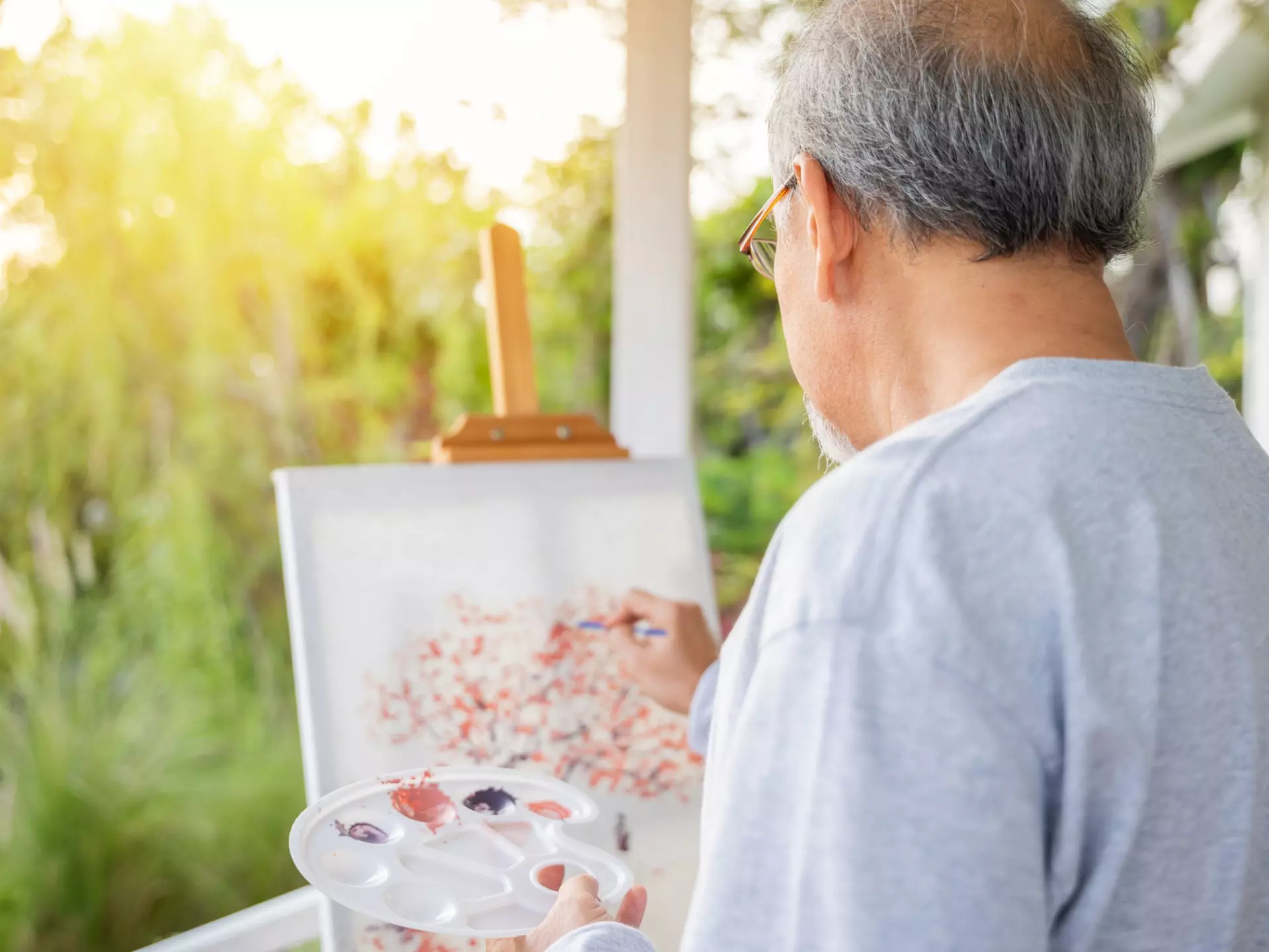
Acrylic Painting
Acrylic paints are thicker than watercolors, and dry quickly. You can paint just about anything with acrylics, but simple landscapes or abstract designs are usually best for beginners, including seniors. You’ll need some acrylic paints in your favorite colors, some stronger brushes (to handle the thicker paint), something to paint on, like a canvas or even a piece of wood, and a bowl of water to rinse your brushes.
Because acrylic paint tends to dry quickly, it’s important to be a bit more cautious. Unlike watercolor, it doesn’t wash off with water once dry. If your loved one makes a little mistake, they can always paint over a dry layer with something new! Just be sure to clean your brushes right away so the paint doesn’t dry on them.
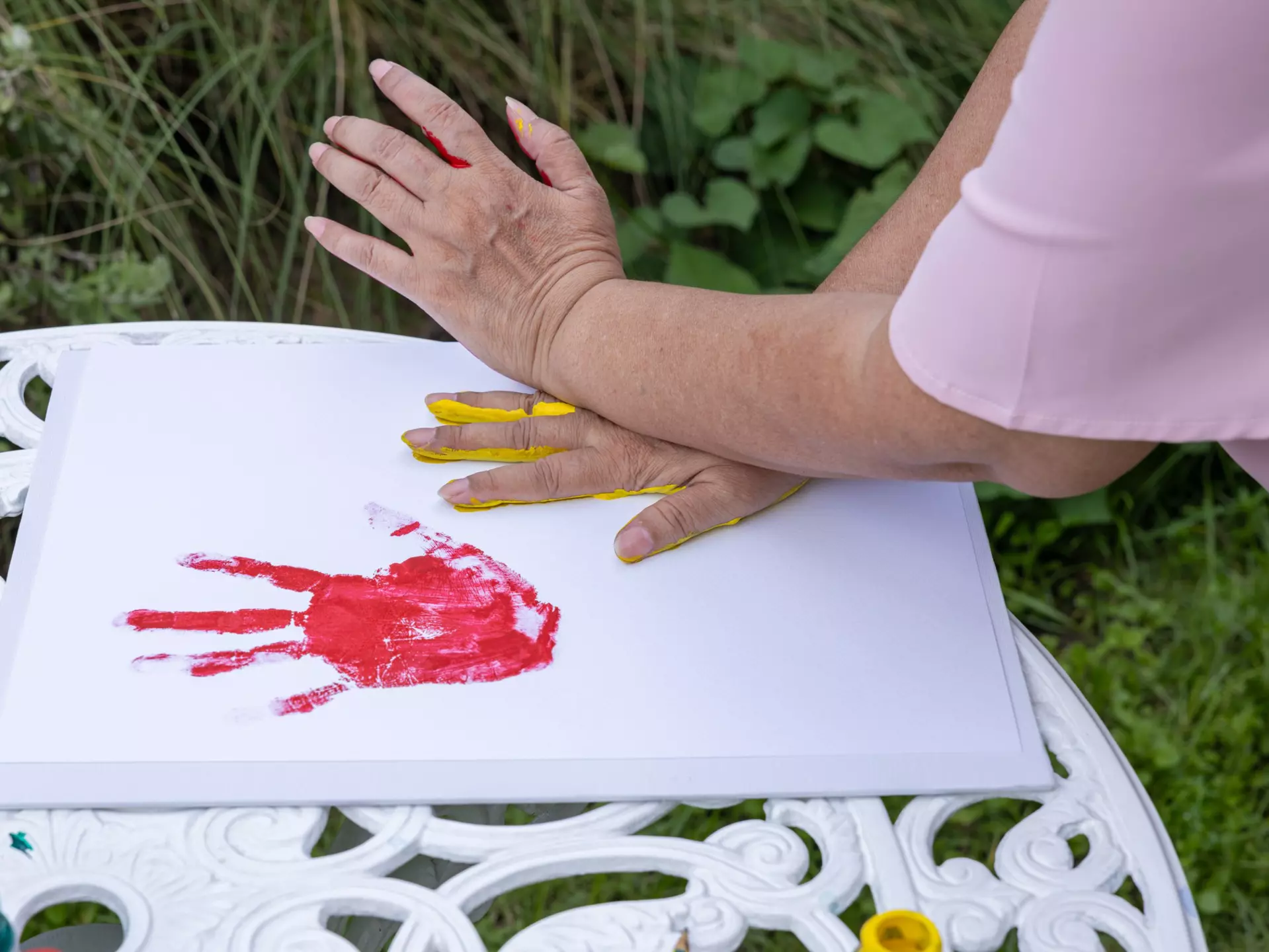
Finger Painting
As you might have guessed, finger painting involves using your fingers to create artful pieces. Just like other types of painting for seniors, there are no rules! It’s more about expressing feelings and ideas without trying to paint real objects. This type of painting can be particularly helpful for someone who has trouble communicating with words, like individuals with advanced memory conditions.
Since you’ll be using your hands, you’ll need some non-toxic, washable paints (make sure they say they’re for finger painting!) and a big piece of paper or even a tray to paint on.

Paint-by-Numbers
Guided art kits, like paint-by-numbers, can be a fun way for seniors to give their brains a good workout without feeling overwhelmed. Paint-by-numbers kits typically come with everything you need, including brushes, paints, and a canvas with your chosen design printed on it. You’ll find plenty of options, including beautiful landscapes, serene nature scenes, and cute animals.
The design is divided into small sections, each marked with a number that matches a specific paint color. All you have to do is fill in each numbered section with the right color to create a finished, beautiful piece of art. Matching the colors takes a bit of focus and concentration, which can provide great cognitive support — especially for someone with memory challenges.
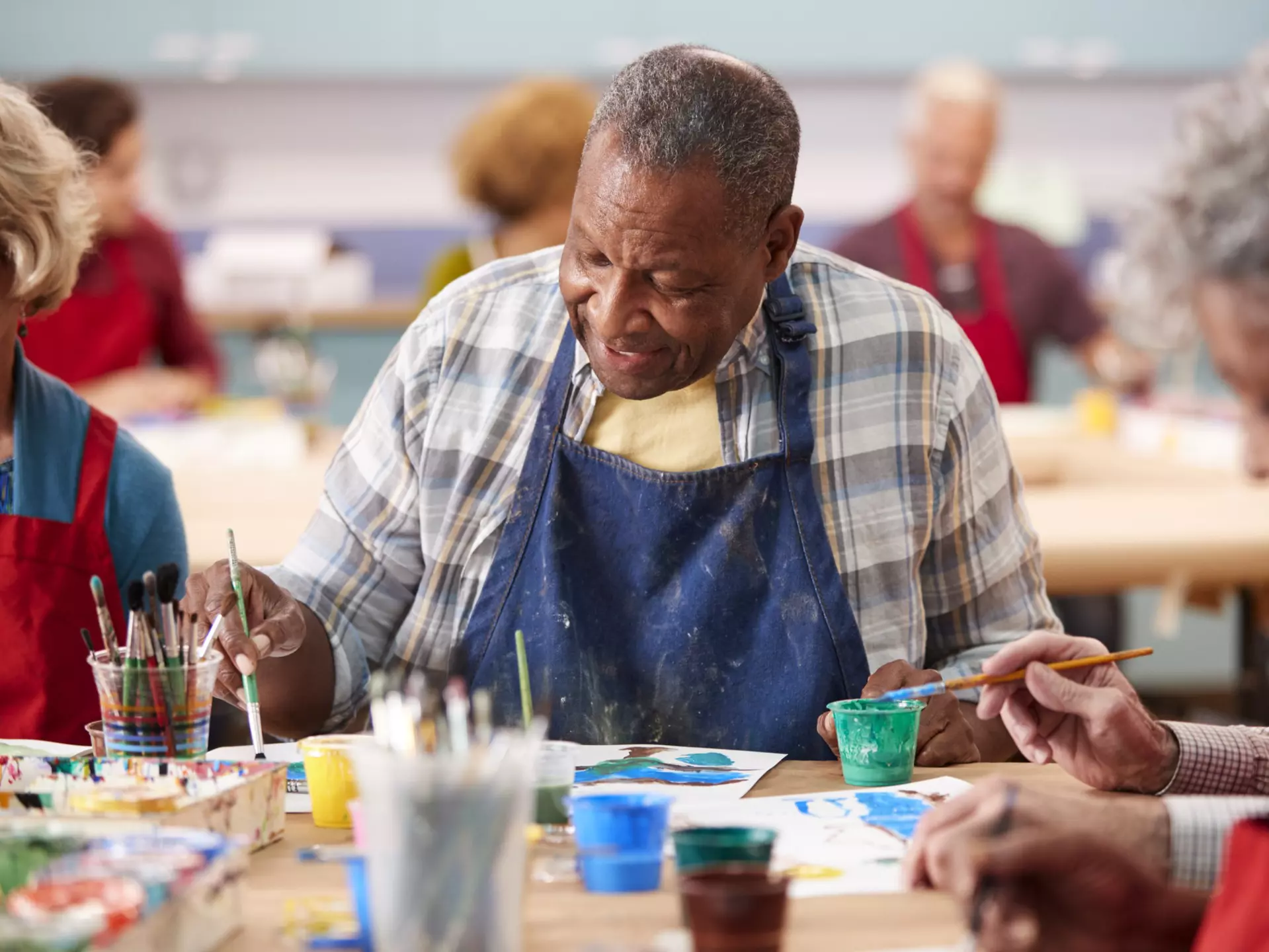
Art Therapy
Sometimes, age-related changes or health conditions can make it difficult for older adults to communicate effectively. This can be a challenging experience for everyone involved.
Art therapy offers a meaningful painting activity for seniors with dementia or Alzheimer’s. Like finger painting, it offers a gentle way to encourage your loved one to express themselves without feeling pressured. It’s typically guided by a trained art therapist and can be offered in a wide range of settings, including hospitals, community centers, or senior living communities.
Adapting Painting for Seniors
Some older adults may have different needs compared to younger painters. Here are some important things to keep in mind to help make painting comfortable and more enjoyable for a senior you love:
Use High Contrast Colors
Many seniors experience a decline in vision later in life. If vision is a concern, it’s important to ensure there is good lighting. It might also help to use brighter colors, and larger canvases or paper, so the details are more visible for someone with reduced vision.
Provide Support for Better Control
If someone you love experiences tremors or unsteady hands due to natural age-related issues, you can try resting their arm on a soft cushion for support. You may also use thicker paint, like acrylics, that don’t run as easily, or try a guided option, like paint-by-numbers.
Keep It Simple
Designs with complex details can feel overwhelming for some seniors, especially those living with memory conditions like dementia. Try to keep things simple by choosing calming colors or simpler designs that allow your loved one to participate at their own pace.
Make Modifications If Needed
Depending on you or your loved one’s specific needs, you may need to make slight adjustments to make painting more enjoyable. Lighter brushes are usually best for someone with joint issues or arthritis. Tools like vertical easels and lap trays can be particularly useful for seniors with limited mobility or those who prefer a more relaxed, sitting position while painting. When choosing a lap tray, look for one with a non-slip surface to keep materials in place and a larger size to hold a variety of painting tools.
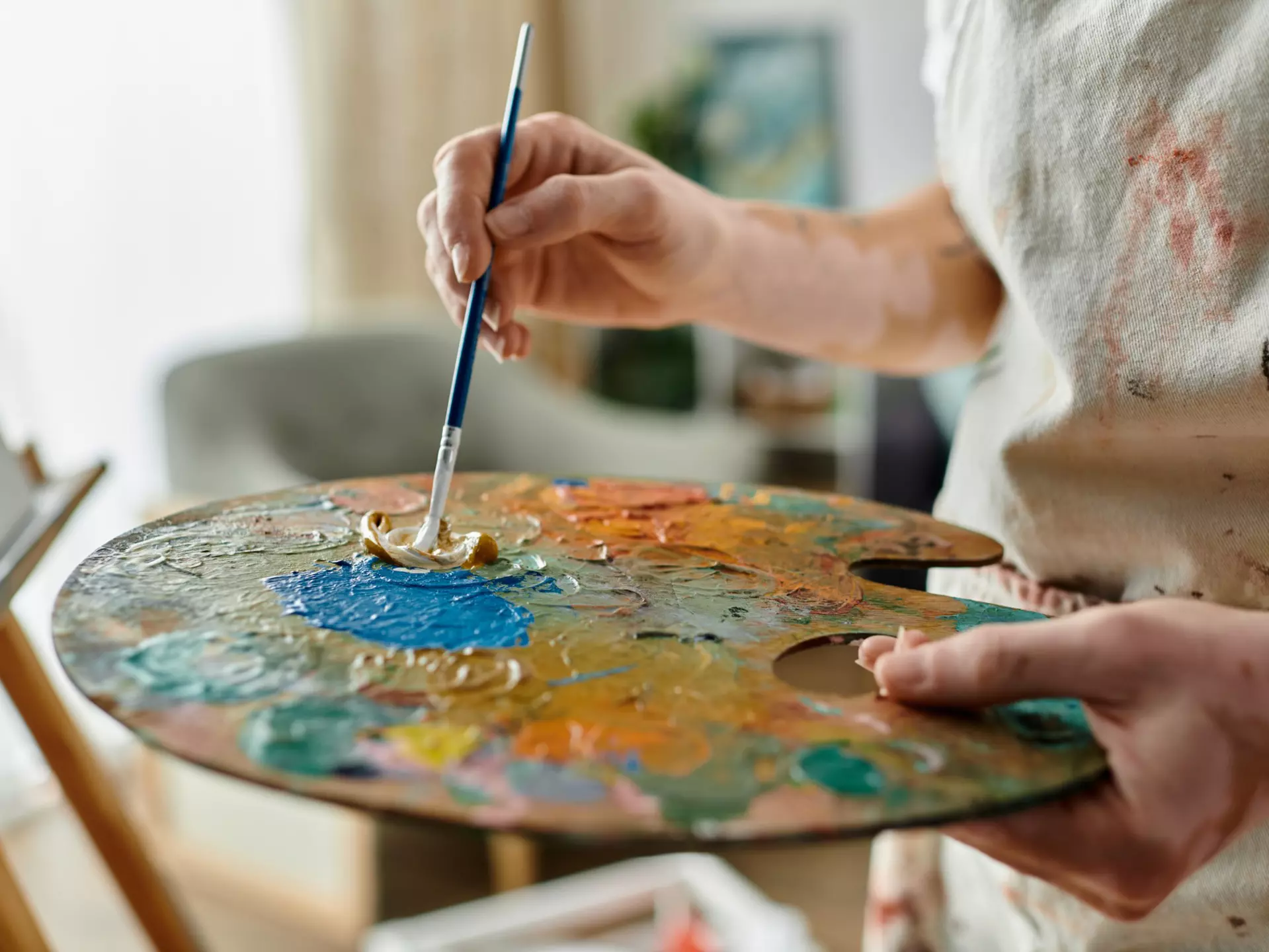
Getting Started With Painting for Seniors
If you’re unsure about how to start painting, you’re not alone. Many of us don’t feel very confident with painting when we first begin. Here’s a simple checklist to help you get started:
What You’ll Need
First and foremost, you’ll need to gather the supplies you need. These might include:
- Paint, like watercolors, acrylics, or finger paints
- A variety of soft and thick-handled brushes
- Watercolor paper, canvas boards, or mixed-media pads
- A plastic plate or lid for mixing colors
- A cup of water for cleaning your brushes
- An apron to protect clothing
- Lap tray or easel for better posture (if needed)
Beginner-Friendly Materials and Brands
If painting for seniors sounds appealing, you might want to look for non-toxic, easy-to-clean materials. Here are some trusted brands that many senior painters enjoy:
- Crayola offers plenty of adult painting supplies.
- Royal & Langnickel stock a variety of affordable beginner kits and brush sets.
- Arteza offers good quality paints and paper for a fair price.
- Faber-Castell offers a range of comfortable grip brushes and supplies for seniors.
Safety and Cleanup Tips
It’s normal for painting sessions to get a little messy. Here are a few helpful tips to help clean up:
- Use washable paints for quick cleaning.
- Keep a damp towel nearby to wipe hands or drips.
- Line the table with a plastic sheet to avoid staining it.
- Wear an apron or use an old T-shirt to avoid staining clothes.
- Clean your brushes right after use.
Setting Up a Senior-Friendly Painting Space
The right surroundings can help make painting more enjoyable for seniors. Here are some practical tips to help you set up a comfortable environment for yourself or someone you love:
- Choose a Quiet, Well-Lit Spot: Many seniors have reduced hearing or vision, which can make it challenging to concentrate in noisy environments. A quiet corner without too much noise or distraction can help your loved one focus and enjoy the process. You might also want to set up near a window to provide some natural light, which is often best for painting. A good lamp with warm, gentle lighting can also help.
- Provide Comfortable Seating: It’s important to ensure the seating is comfortable, especially during longer painting sessions. If your loved one has limited mobility, a sturdy lap tray or adjustable easel can make painting more accessible and enjoyable.
- Keep Supplies Within Reach: Stretching or twisting can be uncomfortable for some seniors, especially those with osteoporosis or back pain. Be sure to gather the necessary supplies beforehand and keep them within easy reach.
- Add a Personal Touch: Whether it’s bringing in familiar items, playing calming music in the background, or using a favorite scent, adding a personal touch can help boost concentration and inspire creativity.

Inspiring Ideas and Subjects for Senior Painters
Despite the many wonderful benefits of painting for seniors, it’s completely normal to feel stuck from time to time. If you or a loved one is unsure what to paint, here are some easy painting ideas for seniors to help get the creative juices flowing:
Classic Starting Points
Painting familiar objects is often a little easier for beginners, including older adults and persons with memory challenges. If you are just getting started or haven’t painted in a while, it might be best to begin with still life paintings, like a bowl of fruit, a vase of flowers, or a favorite teacup. Landscapes are another great choice.
Personal Inspiration
You may also paint a piece from the plenty of life experiences you’ve had. You could try painting your childhood home or pet. Or perhaps even try using your grandchildren’s drawings as inspiration.
Explore Different Styles
If you feel a little adventurous, you may explore different painting styles. For instance, impressionism is more about capturing the feeling of a moment rather than every tiny detail. Abstract painting can be a fun way to explore color and texture without needing to create specific objects.
Where to Find Painting Classes for Seniors
Whether you’re looking to pick up painting for the first time or help your beloved senior reignite their old hobby, there are plenty of places you can find senior-friendly painting classes, including:
- Senior Centers: Check with your local senior center to see if they host painting classes for seniors as part of their weekly activities. Some community centers offer free or low-cost painting classes for older adults.
- Local Galleries: Many art studios offer “senior art days” at discounted rates. These classes are often taught by professional artists who enjoy working with older adults.
- Adult Education Programs: If you’re seeking to embrace lifelong learning, it can be worth looking into continuing education programs at your local colleges or school districts. Many of them usually have non-credit art classes that are open to people of all ages and skill levels, including seniors.
- Senior Living Communities: Many senior living communities may offer a wide range of fun activities and programs for residents to enjoy, including art and painting classes. If these sound appealing to you, consider checking out our nearby communities.
How StoryPoint Residents Enjoy Painting
At StoryPoint Group communities, painting isn’t just a creative outlet — it’s a meaningful way for residents to express themselves, connect with others, and make a positive impact. From watercolor workshops to group art projects, residents are encouraged to explore their artistic side and share their creations in ways that uplift both their communities and those beyond.
Take Thelma, a 100-year-old resident of Danbury North Canton, in North Canton, Ohio, who uses her talent and heart to support a cause close to home. Thelma decorates paper bags for Compassion Delivered, a nonprofit that provides meals to people with life-threatening illnesses. Each bag she paints is a small work of art, signed “Thelma 100,” and delivered with a dose of joy, color, and kindness — proving that art truly has the power to nourish both body and spirit.
StoryPoint Group Communities: Here for You and Your Loved One
At StoryPoint Group communities, we support our residents like they’re family, which is why we always take the time to truly understand each person’s specific needs; to help us tailor the best possible experience for them. If someone you love could benefit from additional assistance, we’re here to guide you.
Give us a call today at 1-844-275-9990 or schedule a tour at your nearby StoryPoint Group community.





